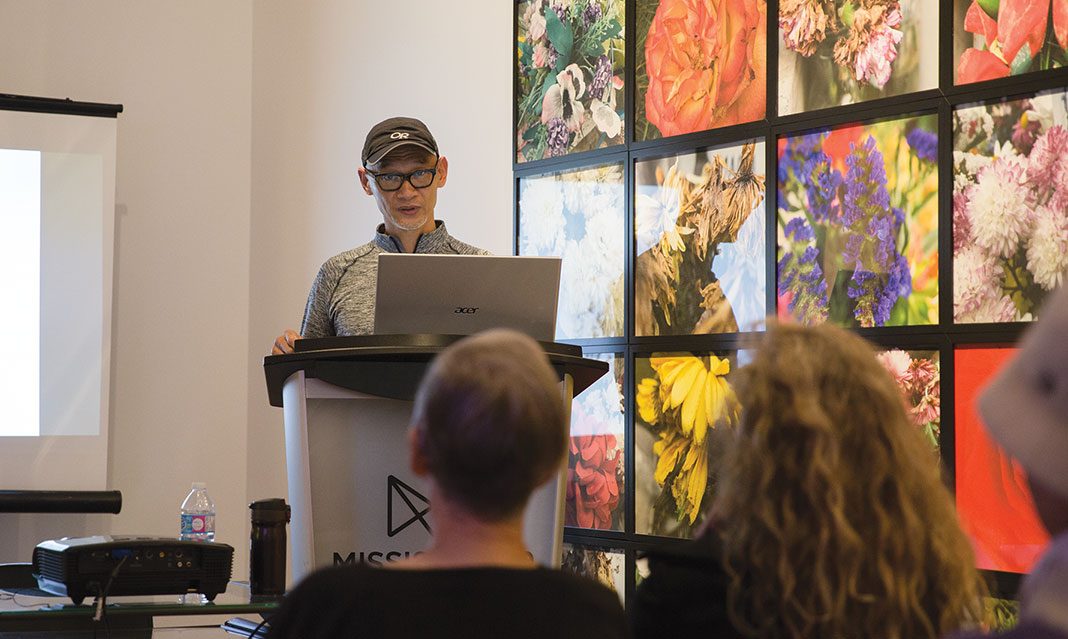Shadowed Land, one of two featured exhibitions at the Art Gallery of Mississauga, has been a hit since its opening on September 22. Ed Pien, the artist behind this display, led a talk at the gallery last Thursday to discuss his inspiration and insight into his work.
From hearing Pien speak, it was evident that he is knowledgeable on the struggles of the basic human condition. Pien explained how art played a role in the passing of his grandmother. Because of this tragedy, he had the opportunity to connect with various relatives that he’d never met before. He described the paper flowers they made together over the span of a couple of days. For Taiwanese Buddhists, like Pien and his family, this tradition is common after the death of a loved one.
The art of paper flowers led Pien to find peace with himself, even when his grief was hard to overcome. At the time, the death of Pien’s grandmother seemed like it would remain in his consciousness as a bad memory. However, he explained that this memory defined his artistic ideas in Shadowed Land. To be clear, Pien didn’t exploit his grandmother’s death for his own artistic purposes. Rather, he used his grief as a driving force to share his talent with the world—an act that his grandmother would undoubtedly respect.
Pien’s slideshow switched to images of The Last Flowers of Manet, a book by Andrew Forge and Robert Gordon. According to Pien, Edouard Manet painted every bouquet of flowers he received at his deathbed in a series of 16 still-life paintings. Pien claimed that in doing so, Manet captured the energy of nature. Manet knew he was dying, yet his desire to portray the essence of beauty outweighed his current state.
The Last Flowers of Manet is crucial to the themes of Pien’s artwork. Pien connects this text to his Mason jar creation, the first piece you’ll notice when entering Shadowed Land. Pien recalled capturing tiny insects outside with jars as a child. With this piece, he wishes to showcase the idea that life moves quickly. He hopes to capture the small blessings of nature, the same way he captured insects. Overall, Pien is interested in how nature produces beautiful creatures with short lifespans. This notion is essential in the way he processes the beauty of nature in his art.
Pien ended his talk with his most celebrated piece in the gallery—the room of record players. He discussed the influence of memory on the creation of this piece. Pien insisted that the way we recall memory is based on the present; we construct our present with an incorporation of our past. This is the reason, he notes, that the music from the turntables is intermittent. Memories fade and resurface, similar to the rhythms emanating from the records.
Pien’s passion was evident from the moment he stepped up to the podium. The overarching theme he expressed was empathy. This emotion is a way for us to share our experiences with each other. Without it, we have no way of understanding one another’s past, present, and future.



